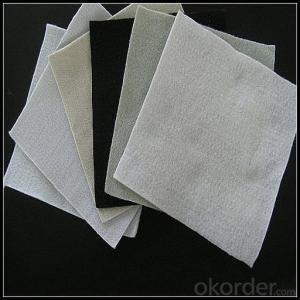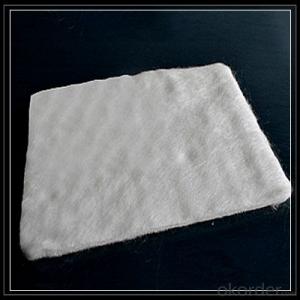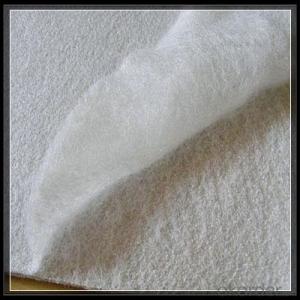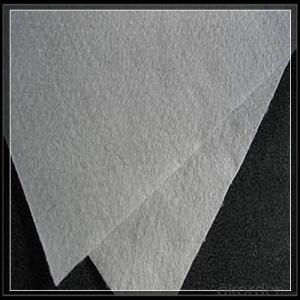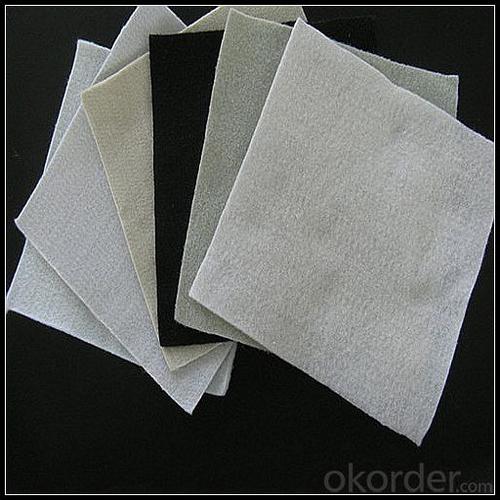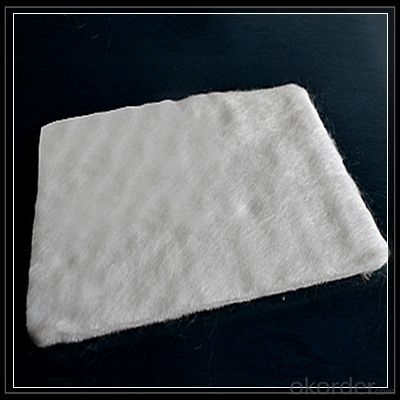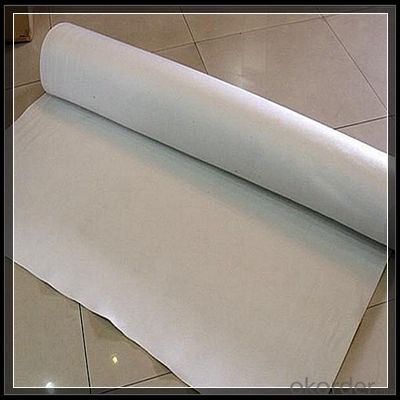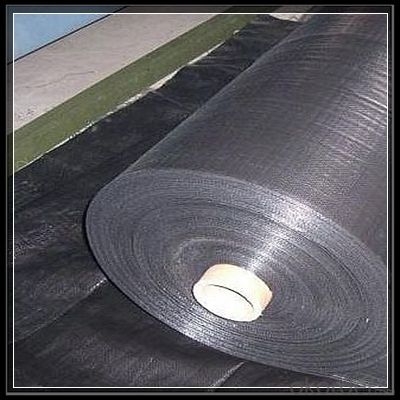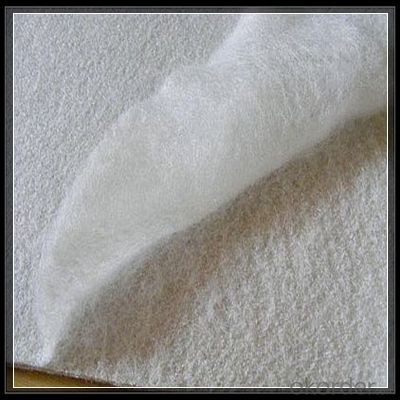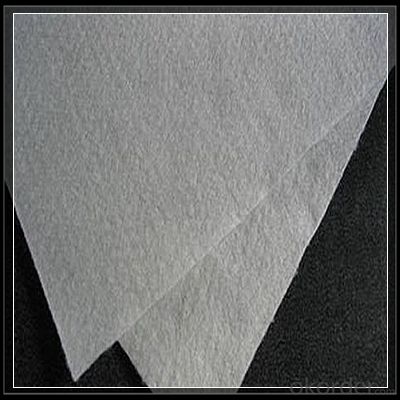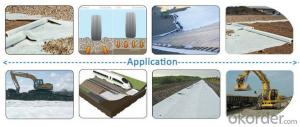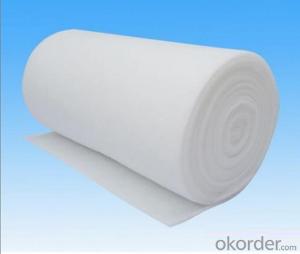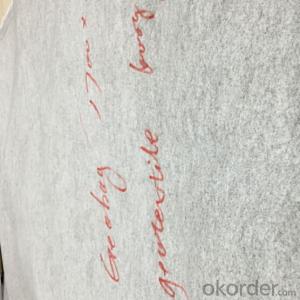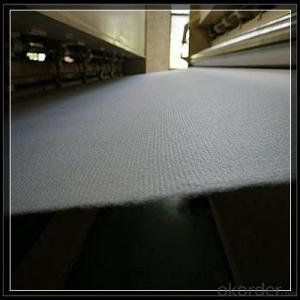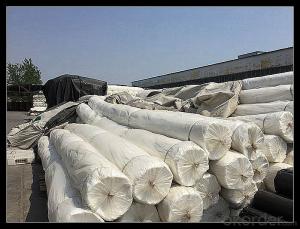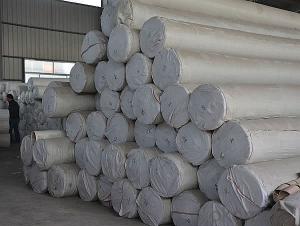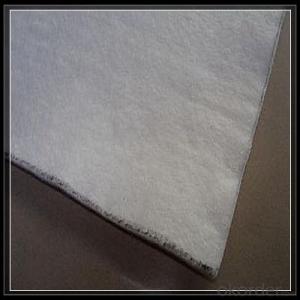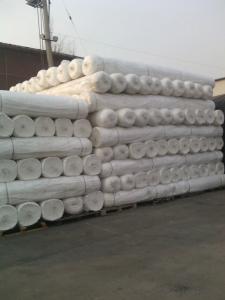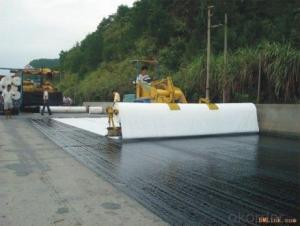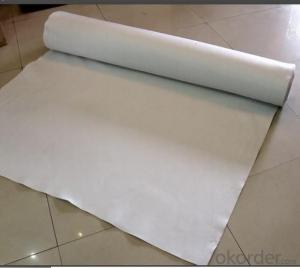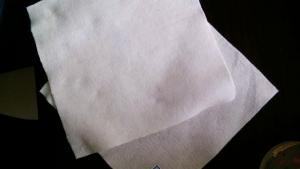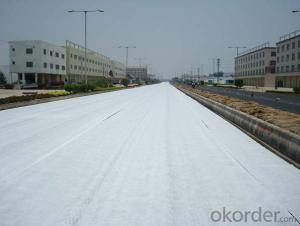Jmd Geotextile - High Stabilization Geo Textile Industrial Nonwoven Fabric
- Loading Port:
- China main port
- Payment Terms:
- TT OR LC
- Min Order Qty:
- 1000 m²
- Supply Capability:
- 1000000 m²/month
OKorder Service Pledge
OKorder Financial Service
You Might Also Like
Specification
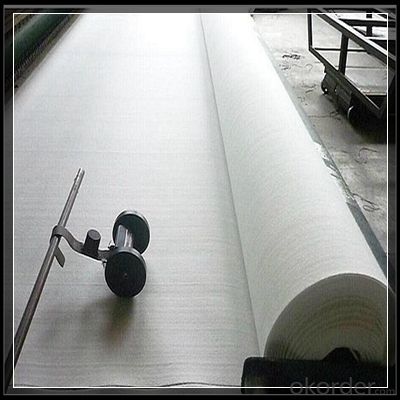

1: UV 500 hours after reservation 70% of
2: Tensile Strength / (KN / M) ≥ 7.5
3: elongation ≥ /% 45
4: Weight :120-140G per square meter
Features:
High strength, puncture resistance and strong;
Acid, anti-corrosion, anti-microbial, anti-aging;
Polyester filament geotextile fabric has excellent permeability, filtration, protection Soil, played isolation, drainage filters, protective role;
Low cost, excellent price, simple construction, easy to use.
Packaging & Shipping
Packing: PLASTIC FILM INSIDE, AND WOVEN BAG OUTSIDE
Shipping: About 15 days after receipt the deposit
geotextile fabric
permeability,filtration,easy for construction
ISO and CE certificate
Good quality and competitive price
Our Service
Quality assurance
1.On a regular basis or as per your request,we entrust national testing agencies to conduct quality inspections
2. Strictly in accordance with the ISO9001-2008 international quality system standard,we monitor and manage the whole process throughout production,quality testing,and measurement to ensure product quality
3. For quality-related construction delay or substandard construction(except for damage or losses due to customer’s responsibility or irresistible natural disasters),we have refunding,replacement,and repair services.We will respond to customers’ feedbacks on quality issues within 24 hours.
FAQ:
Q: What kind of payments does jenor support?
A: T/T, L/C, Cash are accepted.
Q: Do you charge for the samples?
A: Accordeing to our company policy, the samples are free, we only charge the freight fee. And we will return the freight fee during the next order.
Q: Can you produce according to customers' design?
A: Sure, we are professional manufacturer, OEM and ODM are both welcome.
Q: Do you have other products?
A: Yes, please check the pictures:
- Q: Geotextile Commission test how many square meters
- Hello, geotextile cloth sent to the third party testing, the general sampling is one to two squares, on the site supervision sampling sampling, it may also cut a large piece, see the supervision of the Huazhi engineering materials manufacturers for you to answer
- Q: Who knows geotextile, how to sew, the best video
- Where do you use it? Professional production geotextile manufacturers to answer,
- Q: What are the geotechnical test test items for highway engineering? The
- The main inspection items are: ① Tensile strength: In the tensile test, the maximum tensile stress of the specimen up to the fracture is the tensile strength, which is called tensile strength in academia. ② elongation: elongation, that is, the percentage of the ratio of the total deformation to the length of the original gauge after the tensile fracture of the specimen. ③ tear strength: it is a thin film or thin film tear resistance of a test method defined in a term. This method is a tear test performed on a special testing machine with a specimen with a predetermined gap. ④ bursting strength ⑤ thickness ⑥ per unit area quality ⑦ permeability coefficient: permeability coefficient, also known as hydraulic conductivity. In an isotropic medium, it is defined as the unit flow rate per unit of hydraulic gradient, indicating the ease with which the fluid passes through the pore skeleton.
- Q: Staple acupuncture non-woven geotextile is what material synthesis
- Using polyester staple fiber fineness of 6-12 denier, the length of 54-64mm polyester crimped short fiber as raw material. Polyester staple fiber is made of polyester (that is, polyethylene terephthalate, referred to as PET, from PTA and MEG polymerization) re-spinning into the fiber after cutting.
- Q: How do geotextiles help with reinforcement of geogrids?
- Geotextiles help with reinforcement of geogrids by acting as a separation layer between the geogrid and the surrounding soil or aggregate. This separation prevents the intrusion of fine particles into the geogrid, which could reduce its effectiveness in providing reinforcement. Additionally, geotextiles provide additional tensile strength and distribute loads more evenly across the geogrid, enhancing its overall performance and durability.
- Q: How do geotextiles contribute to green building certifications?
- Geotextiles contribute to green building certifications by providing sustainable and environmentally friendly solutions. They can be used in various applications such as erosion control, stormwater management, and soil stabilization. By utilizing geotextiles, green building projects can achieve high performance in areas like water efficiency, site selection, and construction waste reduction. Additionally, geotextiles promote the use of recycled materials, reduce the need for harmful chemicals, and enhance energy efficiency, all of which are key factors in obtaining green building certifications.
- Q: What are the maintenance requirements for geotextile-reinforced retaining walls?
- The maintenance requirements for geotextile-reinforced retaining walls typically include regular inspections for signs of erosion, damage, or structural issues. Additionally, any vegetation growing near the wall should be monitored and removed if it poses a threat to the integrity of the structure. It is also important to ensure proper drainage and prevent water buildup behind the wall. Regular cleaning and removal of debris is necessary to avoid blockages and maintain the functionality of the drainage system. Overall, following manufacturer guidelines and conducting routine maintenance activities will help ensure the longevity and effectiveness of geotextile-reinforced retaining walls.
- Q: What are the key factors affecting the clogging behavior of geotextiles?
- The key factors affecting the clogging behavior of geotextiles include the particle size and gradation of the soil or other material being filtered, the permeability and porosity of the geotextile, the hydraulic loading conditions, the presence of fines or clay particles in the soil, and the duration of exposure to clogging agents. Other factors such as the geotextile's physical and chemical properties, the presence of biological organisms, and the maintenance practices also play a role in determining the clogging behavior.
- Q: How do geotextiles aid in the reduction of soil compaction?
- Geotextiles aid in the reduction of soil compaction by providing a layer of material that distributes the load more evenly, reducing the pressure on the soil. This helps to improve soil structure, increase porosity, and enhance drainage, ultimately preventing soil compaction.
- Q: Geotextile vertical permeability coefficient to retain a few digits
- According to GB / T-1998 in the short wire geotextile permeability coefficient, K = 1.0-9.9 between, so this coefficient should be retained after a decimal.
Send your message to us
Jmd Geotextile - High Stabilization Geo Textile Industrial Nonwoven Fabric
- Loading Port:
- China main port
- Payment Terms:
- TT OR LC
- Min Order Qty:
- 1000 m²
- Supply Capability:
- 1000000 m²/month
OKorder Service Pledge
OKorder Financial Service
Similar products
Hot products
Hot Searches
Related keywords
